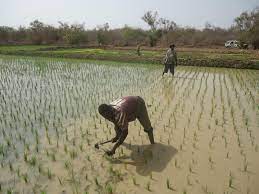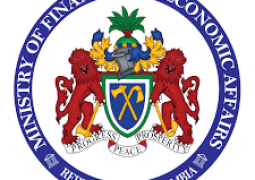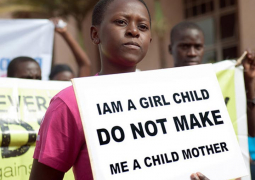
The Gambia is the smallest country of mainland Africa and one of the world’s poorest nations, ranking 174th out of 189 countries in the 2018 Human Development Index of the United Nations Development Programme.
Income poverty and household food insecurity are widespread, with nearly half of the population living below the absolute poverty line. With an annual growth rate of 3.2 per cent, the population of 2 million is expected to double in the next 20 years.
It is the eighth most densely populated country of the continent, with 174 persons per square kilometre. The population primarily consists of youth due to a high fertility rate combined with a low life expectancy of 63 years.
This demographic trend contributes to a high dependency ratio, with an average household size of 8.3 people. Forty per cent of the population is located in rural areas.
The agricultural sector employs 70 per cent of the labour force and contributes to 25 per cent of the country’s GDP; services, mainly trade, transport and communications account for 60 per cent of GDP, while the industrial sector, mostly construction and geoprocessing, contributes 15 per cent.
At least half of the country’s poor are farmers and agricultural workers. Paradoxically, among the poorest farmers are those who produce groundnut, the main export crop.
Poverty is higher in rural areas than in urban areas, mainly due to overreliance on rainfed agriculture and exclusion from economic opportunities and social services.
Poverty also disproportionately affects young people and the elderly.
Underlying the high poverty rates is the country’s relative lack of economic diversity, which makes it highly vulnerable to increasingly erratic rainfall, seawater intrusion into cultivable lands, food price volatility and financial crises.
Although pockets of poverty can be found throughout the country, it is particularly prevalent in the North Bank, Central and Upper River regions, where about two thirds of the population are poor.
Since the mid-1980s, The Gambia has implemented economic policies favouring 2012-2015 macroeconomic stability, market liberalization and private-sector development.
In 1996, the government adopted The Gambia Incorporated Vision 2020, which is a blueprint for national development covering a 25-year period.
The government’s 2012-2015 Programme for Accelerated Growth and Employment recognizes that poverty reduction in rural areas requires priority investment in agriculture, health and education. The government also introduced the 2009-2015 Agriculture and Natural Resources Policy (ANRP) as part of its commitment to transform the country’s agriculture into a robust, market-oriented sector.
The country’s most important proposal for agricultural development, the 2011-2015 Gambia National Agricultural Investment Programme (GNAIP), is a response to the main national strategic programmes, such as the Comprehensive Africa Agriculture Development Programme (CAADP) framework.
IFAD has been the key donor supporting the government in the effective implementation of GNAIP through the design of a national agricultural and water management project, as well as the development of a comprehensive monitoring and evaluation framework to improve the performance of the agricultural sector.
The government has also developed policies in other areas, most notably the 2010-2020 Gender and Women Empowerment Policy and the 2009-2018 National Youth Policy, which promote socio-economic growth and sustainable development. In 2003.
The Gambia and other countries in Africa pledged to allocate 10 per cent of their national budgets to the agricultural sector in the Maputo Declaration.
To date, the country’s actual annual allocation in the sector has been around 7 per cent.
The government is adopting a public-private partnership approach to fill the critical investment and service gaps in the agricultural and rural development sectors.
IFAD, in collaboration with the World Bank, is assisting the government in implementing a private-sector policy framework focusing on agricultural input service delivery to create a much-needed conducive environment for private-sector investment, with the public sector as a facilitator and catalyst.
Source-Youth news





